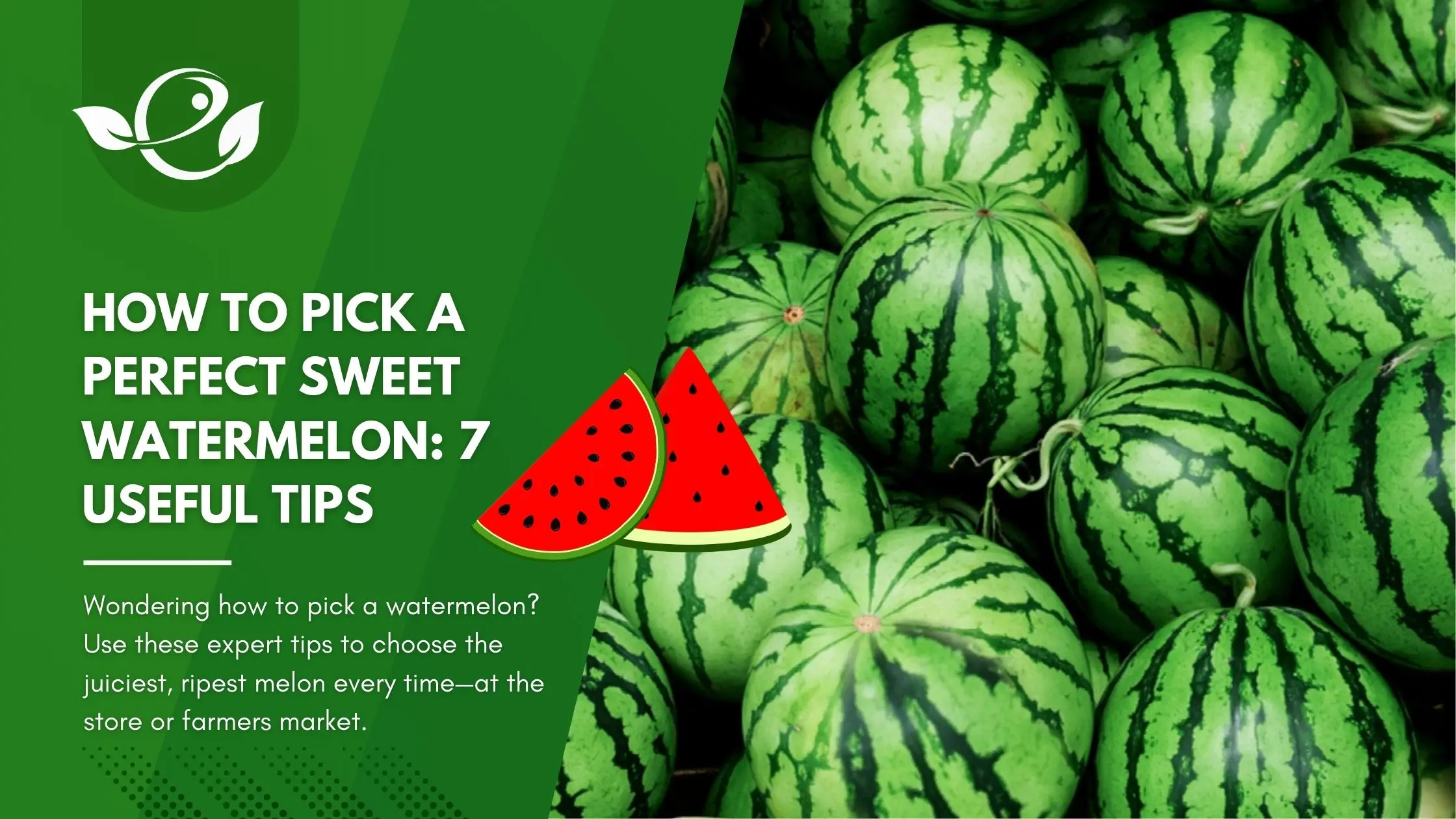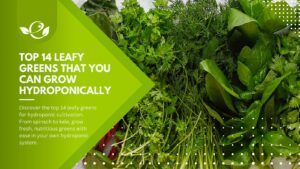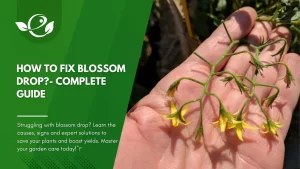Table of Contents
Let’s be honest — biting into a bland, watery watermelon is one of summer’s greatest letdowns. You lugged it home, cut it open with high hopes… only to find pale flesh, zero sweetness, and the crushing taste of disappointment.
But what if we told you that picking the perfect sweet watermelon isn’t guesswork — it’s a skill?
Whether you’re slicing for a BBQ, juicing for a picnic, or just craving a chilled slice on a hot day, this guide will show you exactly how to pick a watermelon like a seasoned pro. From field spots and stem tricks to secret thumps and supermarket smarts, we’ve packed this article with expert tips and science-backed signs that guarantee juicy, sweet success.
So grab a cart (or basket), and let’s decode the watermelon like a fruit whisperer.
How to Choose a Watermelon: Timing & Source
Picking the right watermelon starts before you even lay eyes on a rind. Understanding when watermelons are at their sweetest and where to find the best ones will dramatically improve your odds of scoring a show‑stopper melon every time.
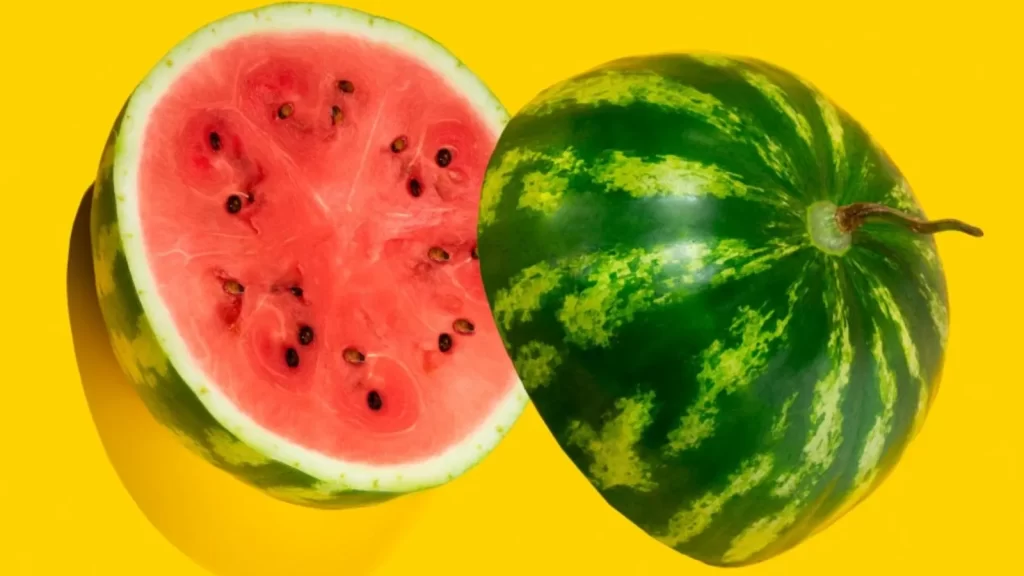
1. Know the Seasonality
- In most regions, watermelon season runs from May through September, with the peak window in July and August when heat and daylight maximize sugar development.
- Regional Variations:
- Florida and Georgia kick off the season as early as May.
- Texas and California harvest heavily in mid‑summer through early fall.
- If you live in one of these top‑producing states, you’ll often find the freshest melons closest to home.
- Off‑Season Availability:
Thanks to imports from Mexico, Central America, and advanced cold‑chain logistics, grocery stores can stock watermelons year‑round—but flavor and texture are usually best in the true season.

2. Source Matters: Where to Shop
- Farmers’ Markets & Farm Stands
- Vine‑Ripened Advantage: Many small growers leave melons on the vine until peak ripeness—your best bet for sweetness.
- Trust the Picker: If you’re buying directly from the farm, the harvest crew has already weeded out underripe fruit. You can often rely on their selections, and some vendors even guarantee a replacement if your melon underdelivers.
- Supermarkets & Grocery Chains
- Look for “Locally Grown” Labels: Melons labeled with a state or farm name are likely fresher than ones shipped from far away.
- Know Your PLUs: Standard red melons use PLU 4031 (seeded) and 4032 (seedless); specialty yellow/orange melons use 4340–4341, 3308–3281, or 3421 for minis.
- Seasonal Displays: Retailers often spotlight watermelon near holidays like Memorial Day, Fourth of July, and Labor Day—plan your purchase around these peak promotions for the best picks and prices.
- Community‑Supported Agriculture (CSA) & U‑Pick
- CSA Boxes: Sign up for a summer produce share—many CSAs include home‑grown watermelons at their sweetest.
- U‑Pick Farms: Nothing beats choosing and harvesting your own melon at the peak of ripeness.
- Grow Your Own
- Ultimate Control: If you have the space and climate (warm soil, full sun), growing watermelon guarantees freshness and flavor—and it’s a fun summer project!
How to Pick a Watermelon (7 useful Tips): Visual Cues
Before you tap or thump, your first—and often most reliable—indicators of ripeness are purely visual. Learning to read the rind at a glance will save you time, money, and disappointment.
1. Uniform Shape and Size
A perfectly ripe watermelon develops evenly on the vine.
- Symmetry matters: Choose melons that are consistently round or evenly oval—lumps or irregular bumps often signal uneven growth or internal hollow pockets.
- Size vs. weight: Among similarly shaped candidates, note heft as you compare—heavier usually means juicier (we’ll cover this in the heft test1).
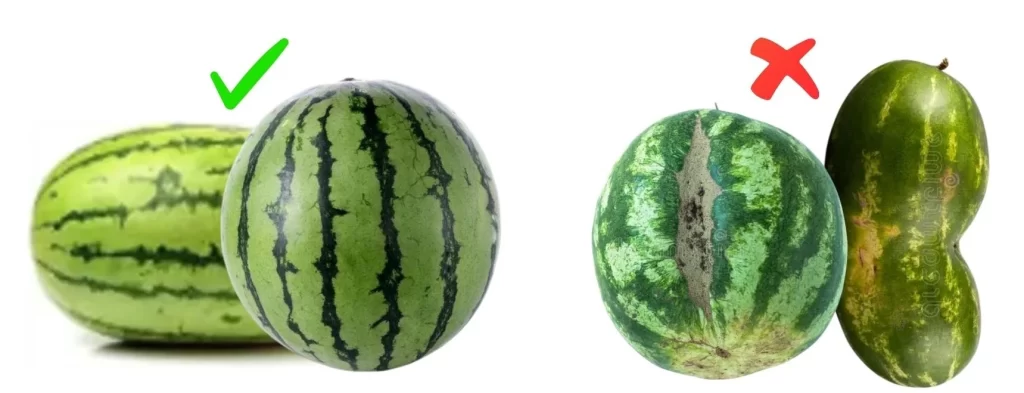
2. Rind Color & Texture
The rind’s finish tells a story about maturity.
- Dull, matte surface: A ripe watermelon’s skin appears waxy‑dry, not glossy. Shiny rinds reflect immaturity.
- Rich green background: Look for a deep, dark green base color. Faded or sun‑bleached patches on the top can also indicate vine‑ripeness.

3. Field (“Belly”) Spot
This yellow patch shows where the melon rested on the ground as it ripened.
- Ideal hue: Creamy‑yellow to deep orange signals extended time on the vine and higher sugar content.
- Under‑ripeness warning: White or pale green spots mean the fruit was picked too early and won’t sweeten post‑harvest.
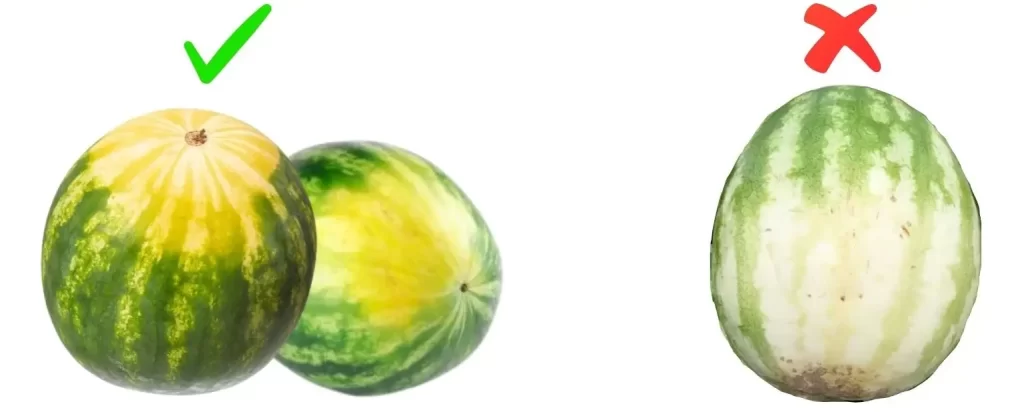
4. Stripe Width (“Two‑Finger Rule”)
A simple at‑a‑glance hack for sugar concentration:
- Measure the dark stripes: Hold two fingers side‑by‑side along a dark green band—if they just fit between two lighter stripes, you’re in the sweet zone. Too narrow = underripe; too wide = overripe.
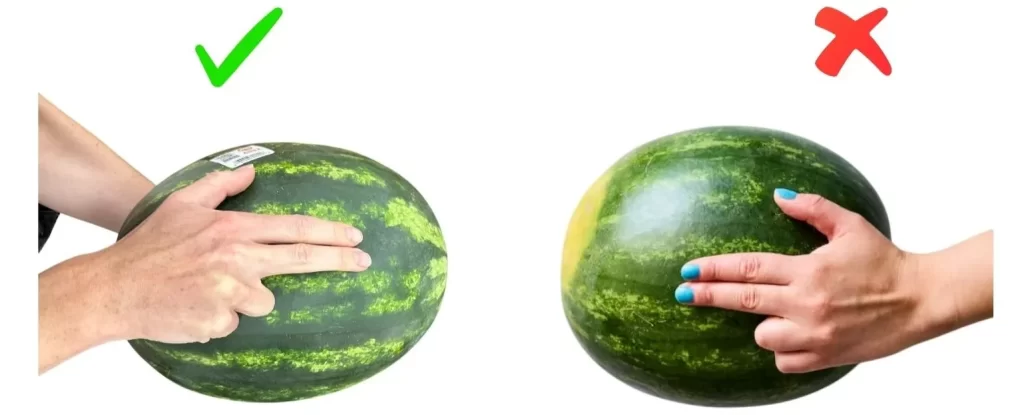
5. Sugar Spots & Webbing
Those brown, rough patches aren’t blemishes—they’re sugar leaks.
- Crystallized sweetness: More extensive “webbing” or “sugar spots” means sugar has seeped out and crystallized on the rind, a hallmark of a very sweet melon.
- Not mold: These spots are hard and grainy, not soft or fuzzy.
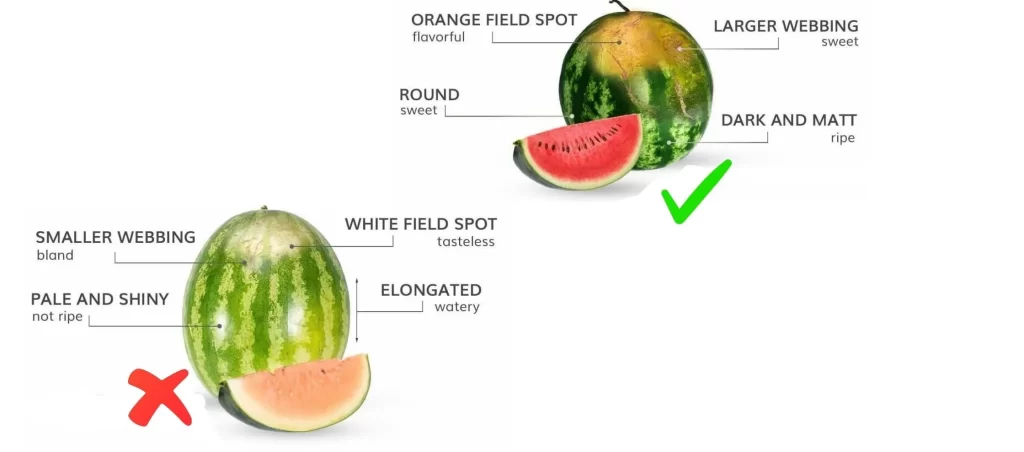
6. Blossom & Stem Ends
Examine both ends for growth and detachment clues.
- Blunt blossom end: The end opposite the stem should be slightly rounded—pointy ends often indicate incomplete development.
- Brown, shriveled stem scar: A dried‑up stem means the melon fell off naturally at peak ripeness. A fresh‑looking green stem suggests early harvesting.

7. Visual Pitfalls to Avoid
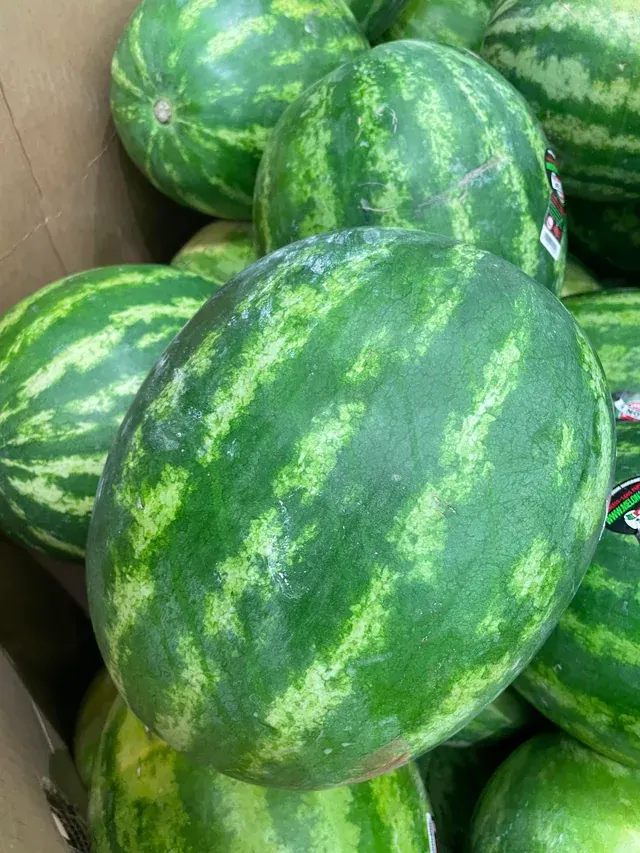
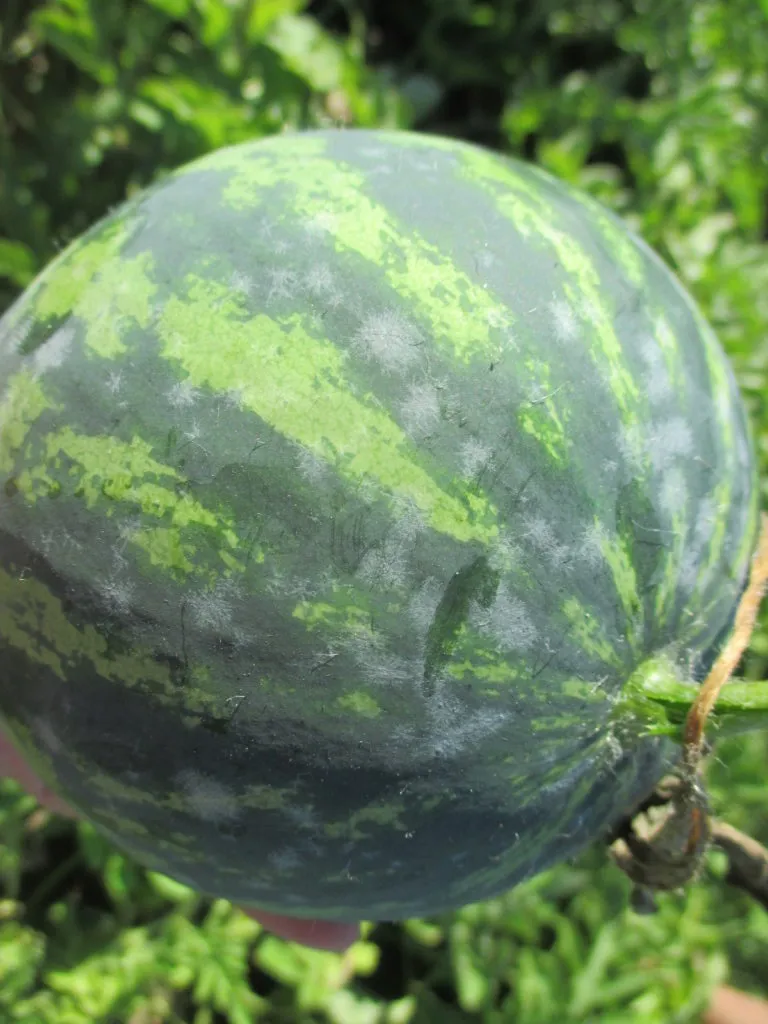
By mastering these visual cues—shape, rind finish, belly spot, stripe width, sugar webbing, and end‑of‑vine signals—you’ll dramatically increase your chances of bringing home a sweet, perfectly ripe watermelon every time.
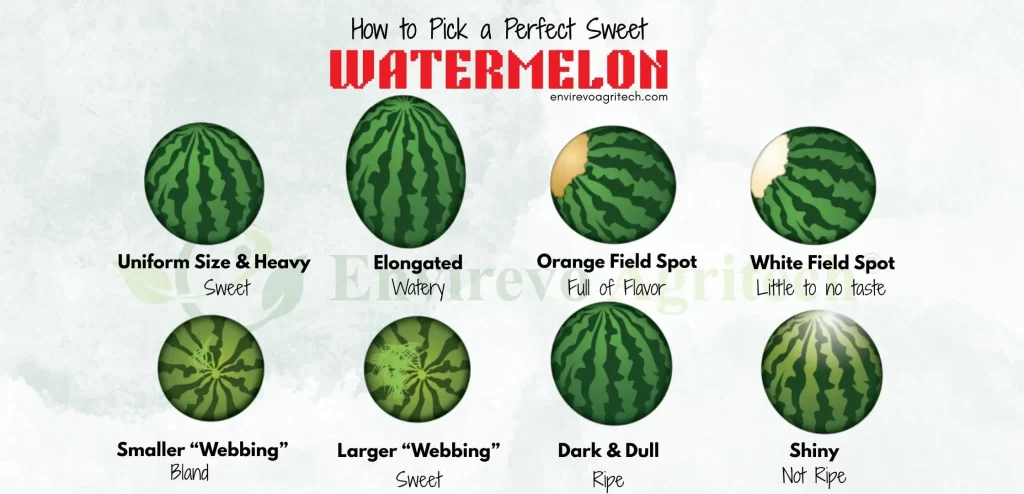
How to Pick a Watermelon: Touch, Sound & Scratch Tests
Relying on sight alone can still leave you with a bland or mealy melon. By combining touch, sound, and a simple scratch test, you’ll dramatically improve your odds of slicing into a perfectly ripe, ultra‑juicy watermelon.
1. Heft Test
- 1. Heft Test
What to do: Lift two or three melons of similar size and compare their weight in your hands.
Why it works: A ripe watermelon has fully developed, water‑dense flesh. The heavier melon—heavy for its size—is more likely to be bursting with juice.
Pro tip: Don’t just grab the biggest one—you want the one with the most mass relative to its volume. Beware of an overly heavy melon that feels “waterlogged,” which can indicate over‑ripeness or excess water absorption. ↩︎
2. Knuckle Tap (“Thump”)
- What to do: Using your knuckles, rap the melon’s side like you’re knocking on a door. Place your ear close enough to hear clearly, but don’t press your ear directly against the rind.
- What to listen for:
- Deep, hollow sound = ripe and ready.
- High‑pitched “ping” = underripe (flesh still too dense).
- Flat or dull thud = overripe or starting to spoil.
- Pro tip: Tap multiple spots around the belly to ensure consistency. If one area sounds off, try another melon.
3. Scratch Test
- What to do: Lightly scratch the rind with your fingernail or a coin—apply just enough pressure to abrade the surface.
- Why it works: A mature watermelon develops a tougher, waxy rind that resists scratching. If your nail pierces or chips the skin easily, the melon is likely underripe.
- Pro tip: Focus on the darker green stripes, where the rind is naturally thicker. Avoid deep gouges that could invite bacteria.
4. Firmness Check
- What to do: Gently press your thumb into the rind at several points around the melon.
- What to feel for:
- Uniform resistance with no soft spots or “give” under normal thumb pressure.
- Any spongy or dented areas suggest overripeness, bruising, or internal breakdown.
- Pro tip: Rotate the melon as you press, checking both ends and the center to catch any hidden soft spots.
How to Choose a Watermelon: Stem & Tendril Inspection
While visual and tactile tests tell you a lot, nature’s own ripeness gauge lies in the vine itself. Examining the stem and nearby tendrils can confirm that a watermelon truly reached peak sweetness before harvest.
- Green & Springy = Keep Waiting: As long as the little curly “pigtail” beside the stem is vivid green and flexible, the melon is still maturing on the vine.
- Brown & Brittle = Ripe: When that tendril turns completely brown, dries out, and snaps easily, it signals the plant has stopped feeding sugars into the fruit—an unambiguous cue that it’s ready to pick.
- Sniff the Stem End: A faint, sweet, floral fragrance at the stem scar can hint at extra sweetness, though this method is subtle and best used alongside other tests.
Variety Considerations
- Seeded vs. Seedless: Seeded varieties often have richer flavor; seedless varieties are convenient for snacking.
- Size Options: “Personal” melons (5–7 lbs) vs “picnic” melons (15–25 lbs).
- Specialty Types: Yellow‑ or orange‑fleshed, heirlooms (which may lack stripes—rely on weight, rind finish, and field spot).
Common Mistakes to Avoid when choosing a watermelon
- Glossy Skin Trap: Shiny melons are almost always underripe.
- Single‑Test Reliance: Never pick by thump alone—combine weight, spot, color, and sound.
- Overlooking Texture: Ignoring rind firmness or field‑spot size often leads to bland results.
FAQ
1. Can you ripen a watermelon after picking?
No — unlike some fruits, watermelons do not continue to ripen after harvest. Once they’re off the vine, their sugar content is set. That’s why it’s so important to choose a ripe one at the time of purchase.
2. Is seedless watermelon less sweet than seeded varieties?
Not necessarily. Sweetness depends more on ripeness and variety than seed presence. In fact, many modern seedless hybrids are bred specifically for high sugar content and consistent flavor.
3. How long does a whole watermelon last at home?
A whole, uncut watermelon can last 7–10 days at room temperature and 2–3 weeks in the refrigerator. For best flavor, keep it in a cool, shaded spot and avoid prolonged direct sun exposure.
4. Is a shiny watermelon bad?
A super shiny watermelon may indicate underripeness. Ripe melons often have a dull or matte finish. If it glistens like polished plastic, you may want to check for other ripeness signs before buying.
5. What is a sugar spot on a watermelon?
A sugar spot is a dark, rough patch or webbing on the rind, usually near the field spot. It’s a sign that sugar has seeped through the rind—a good indicator of sweetness, not damage.
Conclusion: Your Sweet Summer Wins Start Here
You no longer have to leave your watermelon fate to chance. With these proven tips — from tendril inspections and field spot checks to knowing the best season and source — you’ve officially unlocked the secret to choosing a watermelon that’s bursting with flavor every time.
Whether you’re buying from a farmers’ market or your local grocery chain, remember: the signs are all there. Nature leaves clues — and now, you know exactly what to look for.
So go ahead: thump it, flip it, sniff it, inspect it. And when that knife slices into a deep red, juicy interior that tastes like summer dreams — you’ll know your watermelon-picking game is strong.
Happy slicing! 🍉☀️
